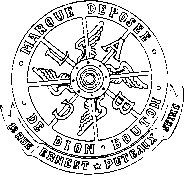DE DION BOUTON

One day ... 1882. in Paris, a descendant of an old French family, the eccentric marquis Albert de Dion saw a toy, a small steam locomotive, which delighted him so much, that he forgot about everything in front of her. He found the manufacturers of this model, mechanics of Georges Bouton and Trepardoux, then offered them a financial contribution to their workshop. This is how a new car brand was created - de Dion, Button & Trepardoux, initially building a three-wheeler, followed by four-wheeled, bicycle-wheeled and steam-powered cars.
After the world exhibition in Paris, where Dion saw the Daimler vehicle, he reported in 1889 r. your patent on the internal combustion engine. A powerful engine 0,37 kW (0,5 KM) did not work on 180 RPM, just like Otta's engine, nor at 450 RPM, just like a Benz engine, but he was spinning at incredible speed 3000 RPM.
The company continued to supply steam vehicles to the market. The first vehicle with a gasoline engine was released only in 1895 r.
At that time, a powerful campaign was unfolding in Paris against smelly and noisy vehicles. "Happy Parisian” he took a witty poster campaign against her. Afis, which is the predecessor of today's Poster, depicted the kidnapping of a naked beauty in de Dion-Bouton's car, which the chase on horses and motorbikes cannot catch up. Parisians showed their sense of humor with the increased purchase of de Dion cars.
The de Diona rear axle also contributed to the company's popularity, already patented in 1893 r., used for the first time in a mass-produced car in 1899 r. It was a rigid drive axle, connecting the two wheels and making them move in parallel. The wheel drive was transmitted via drive shafts, both ends with articulated joints. The differential was mounted on a sprung part of the vehicle. The de Dion drive axle tried to combine the advantages of a rigid drive axle with an independent wheel suspension. The poor strength of the materials used resulted, that this good design solution was forgotten for some time.
Therefore, from 1911 r. the models again had conventional rigid driving axles.
The de Dion-Bouton company produced the last car in 1932 r.